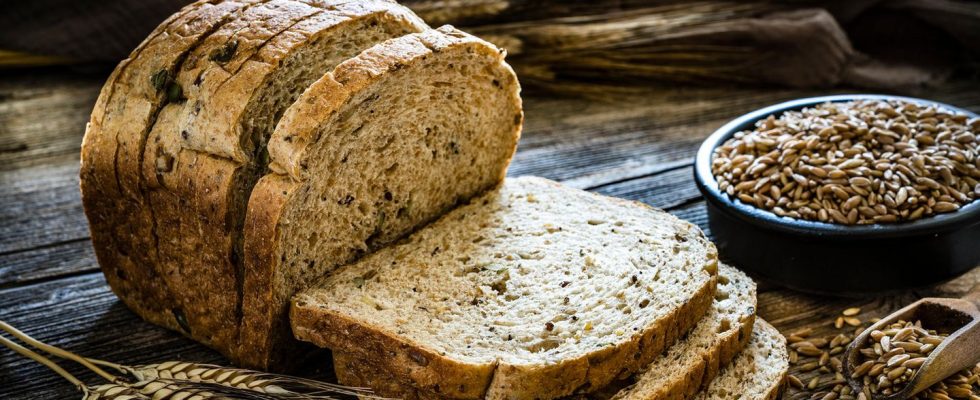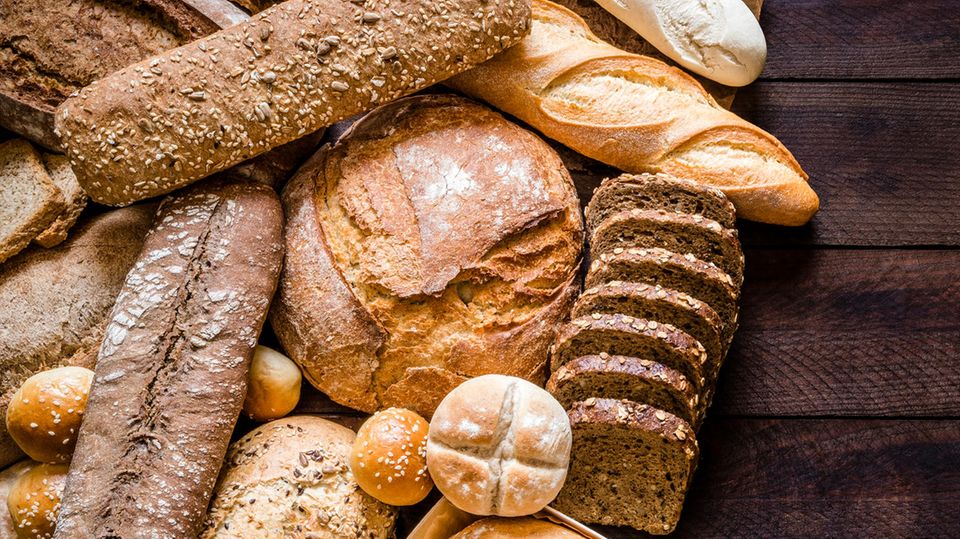Crispy and aromatic
German bread culture in your own kitchen: Quick recipe for fresh wholemeal spelled bread
German bread culture: Crispy kernels and seeds give this wholemeal spelled bread an incomparable bite
The German bread culture is world famous. With this recipe for an aromatic wholemeal spelled bread with seeds and seeds, you can make humanity’s oldest cultivated staple food yourself in no time at all.
Is there anything better than the smell of freshly baked bread? Hardly likely. We Germans love our bread – every German consumes an average of around 70 kilograms of it per year. Varieties are a dime a dozen: over 3,000 in Germany alone. So it’s no wonder that the German bread culture was recognized by UNESCO as intangible German cultural heritage in 2014 because of its unique diversity.
German bread culture: Bread as the oldest cultivated food
Bread is one of the most important staple foods and is also one of the oldest cultivated foods in the world. The first grain was grown in the Neolithic period. At that time, einkorn and emmer were mainly used; it was only later that the variety of grains grew and new varieties such as wheat and barley were grown.
The Italian Institute of Prehistory and Protohistory even provided evidence that flour was made 30,000 years ago. When examining old stone tools, the signs of wear showed that they were used as mortars. Microscopic analyzes even revealed the remains of starch grains. Accordingly, the tools were used for grinding grain.
The scientists assume that the flour was initially used to make porridge. At some point, prehistoric man must have discovered that heating the porridge on, for example, a hot stone or an extinguished fireplace strengthens, browns and even preserves it. Sourdough was created around 6,000 years ago – probably from dough that was accidentally left standing, allowed to ferment and then baked. So we humans have been eating a grain-based diet for at least 30,000 years, with grain porridge being baked for at least 22,000 years. Bread ensured the survival of our ancestors.
Seeds and kernels for plenty of nutrients and bite
So it’s no wonder that we like this staple food so much. We now enjoy a wide range of varieties – whether with grains or without, gluten-free or with wheat, light, dark or mixed – there is almost nothing that is not available.
Seeds and kernels in particular give freshly baked bread an irresistible bite and also ensure an attractive appearance. Last but not least, they are very rich in nutrients and have many health-promoting ingredients. While linseeds score points with plenty of fiber and thus stimulate digestion and keep you full for a long time, sunflower seeds provide plenty of protein. Pumpkin seeds also have an anti-inflammatory effect. Seeds and kernels of all kinds are full of unsaturated omega-3 or omega-6 fatty acids, vitamins, as well as iron, potassium, calcium, magnesium and zinc.
Spelled gives the bread an aromatic, nutty note. It is also a high-quality source of protein and provides minerals and vitamins. This way you start the day with a good foundation.
Recipe for a wholemeal spelled bread with seeds and kernels
Ingredients
- 100 g pumpkin seeds
- 100 g sunflower seeds
- 30 g pine nuts
- 20g flax seeds
- 1 cube of yeast
- 500 ml lukewarm water
- 500 g wholemeal spelled flour
- 10g salt
- 2 tbsp apple cider vinegar
- Butter/margarine for greasing the mold

preparation
- Preheat oven to 180 degrees fan.
- Grease a 30 centimeter long loaf tin with butter or margarine.
- Mix together sunflower seeds, pumpkin seeds, pine nuts and linseeds. Set aside a few seeds for later sprinkling.
- Put a handful of seeds in the mold.
- Dissolve the yeast cube in 500ml lukewarm water. To do this, first crumble it and then stir it with a whisk.
- Mix the spelled flour with the remaining grains and add the dissolved yeast mixture.
- Add the salt and apple cider vinegar and knead everything together for at least five minutes.
- Pour the dough into the loaf pan and sprinkle with the seeds.
- Bake the bread in the preheated oven for about 45 minutes.
Sources: Bread Institute, PNAS



